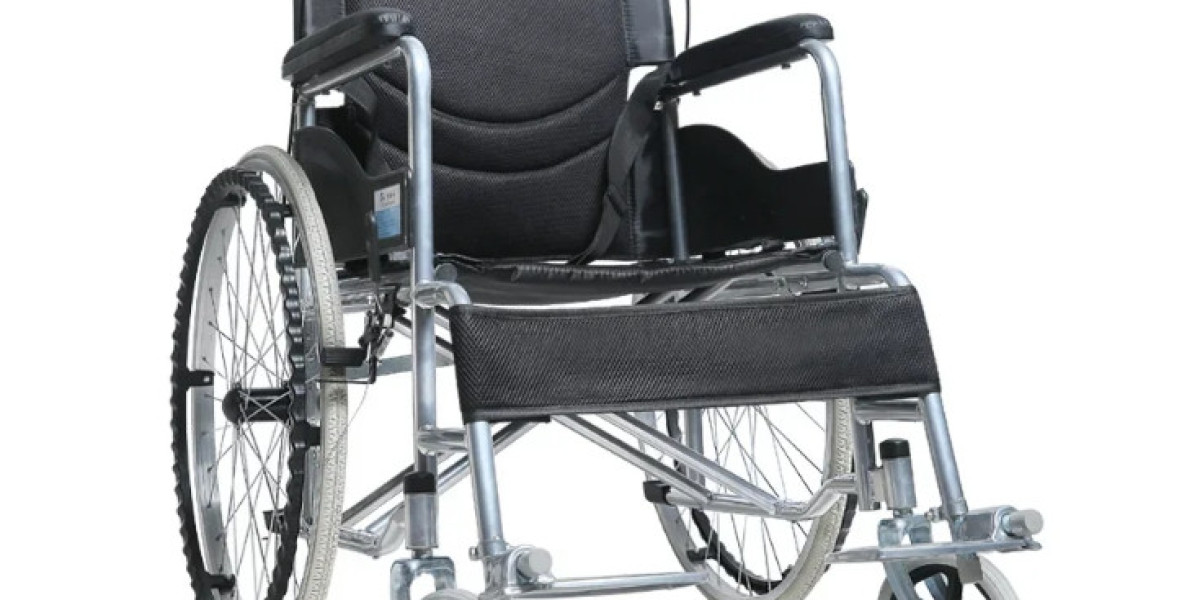The manual wheelchair stands out as a crucial tool for individuals with limited mobility. Offering independence and maneuverability, these wheelchairs provide essential support for daily activities. Understanding the features, benefits, and maintenance of manual wheelchairs is key to optimizing their utility for users. This blog post delves into the nuances of manual wheelchairs, shedding light on their significance and practical usage. From types and customization options to tips for selecting the right model, this discussion aims to empower users with valuable insights to enhance their mobility experience.
Exploring Manual Wheelchair Types
Standard vs. Transport
Standard wheelchairs are versatile and suitable for daily use, offering a balance between functionality and portability. They typically have larger rear wheels for self-propulsion. On the other hand, transport wheelchairs are lightweight and compact, ideal for travel and short outings. They have smaller rear wheels, making them easier to maneuver in tight spaces.
Sport Wheelchairs
Sport wheelchairs are specifically designed for various activities like basketball, tennis, or racing. They feature a streamlined design with adjustable components tailored to each sport. For example, basketball wheelchairs have angled wheels for better stability during quick turns, while racing chairs have a longer frame for enhanced speed.
Reclining Back Wheelchairs
Reclining back wheelchairs offer the flexibility of adjusting the backrest angle to provide comfort and prevent fatigue during extended periods of sitting. These wheelchairs are beneficial for individuals who need to spend long hours in a seated position due to medical conditions or disabilities. The ability to recline the backrest can help alleviate pressure points and reduce the risk of developing sores.
Folding vs Rigid Wheelchairs
Portability
Folding wheelchairs are lightweight and compact, making them ideal for easy transport in vehicles or storage in tight spaces. They can be conveniently folded and carried along, enhancing mobility for users on the go.
Stability and Durability
Rigid wheelchairs are known for their stability and durability, providing users with a strong and sturdy frame that ensures a secure seating experience. The rigid structure offers enhanced support, especially during maneuvering or navigating rough terrains.
Weight Differences
Folding wheelchairs: Typically weigh less than rigid wheelchairs, allowing for easier handling and lifting when transferring in and out of vehicles.
Rigid wheelchairs: While heavier than folding counterparts, rigid wheelchairs offer superior stability due to their solid frame construction, making them suitable for long-term use without compromising on strength.

Benefits of Lightweight Wheelchairs
Enhanced Maneuverability
Lightweight wheelchairs are designed to provide easier maneuverability for users, allowing them to navigate various terrains with minimal effort. The reduced weight of these wheelchairs enables individuals to move around independently and swiftly.
Users of lightweight wheelchairs experience a significant improvement in their mobility, as the lighter frame allows for smooth turns and effortless navigation through tight spaces. This enhanced maneuverability is especially beneficial for individuals who require frequent adjustments in direction or need to navigate crowded areas.
Independence and Freedom
The impact of wheelchair weight on user independence is profound. By opting for a lightweight wheelchair, individuals can enjoy a greater sense of freedom and autonomy in their daily activities. The reduced weight makes it easier for users to propel themselves, promoting self-reliance and enhancing overall quality of life.
With a lightweight wheelchair, users can easily transport their mobility aid without assistance, fostering a sense of independence and reducing reliance on others for mobility support. This increased level of independence empowers individuals to engage more actively in social interactions and participate in various activities with ease.
Travel-Friendly Design
Light transport wheelchairs offer unique benefits for travel enthusiasts. Their compact and lightweight design makes them ideal companions for individuals who enjoy exploring new places. These wheelchairs are easy to fold and store, making them convenient for travel by car, plane, or public transportation.
The portable nature of light transport wheelchairs allows users to maintain their active lifestyle while traveling, ensuring that they can access different destinations comfortably. Whether exploring bustling city streets or navigating airport terminals, these lightweight wheelchairs provide users with the flexibility and convenience needed for seamless travel experiences.
Tilt-In-Space Wheelchairs Overview
Pressure Relief
Tilt-in-space wheelchairs are designed to provide pressure relief for users by allowing them to adjust their position. This feature helps in preventing pressure sores, a common issue among wheelchair users.
Positioning Benefits
Users of tilt-in-space wheelchairs can benefit from enhanced positioning options, which are crucial for individuals with specific medical needs. The ability to adjust the chair's angle helps in maintaining proper posture and reducing the risk of musculoskeletal complications.
Customization Options
One of the key advantages of tilt-in-space wheelchairs is the availability of customization options. Users can personalize their chairs according to their unique requirements, such as seat width, depth, and backrest height, ensuring optimal comfort and support.
Medical Needs
Tilt-in-space wheelchairs play a vital role in catering to individuals with specific medical needs. For users who require frequent repositioning or have limited mobility, these wheelchairs offer a solution that promotes both comfort and health.
Sports Wheelchairs Features
Design Elements
Sports wheelchairs are meticulously designed to cater to various sporting activities, ensuring optimal performance for athletes. The wheels on sports wheelchairs are larger and more durable than those on standard wheelchairs, often resembling bicycle tires to provide better traction and stability during high-speed maneuvers. These specialized wheels enable users to navigate different terrains with ease, whether it's a smooth indoor court or a rugged outdoor track.
Specialized Features
Handcycles, a type of sports wheelchair, feature a unique design that allows users to propel the chair using their arms. This design is particularly beneficial for individuals with lower body impairments who still want to engage in cycling activities. On the other hand, all-terrain wheelchairs are equipped with robust caster wheels that can handle rough surfaces like gravel or grass without compromising stability. These features make them ideal for outdoor adventures and off-road sports.
Promoting an Active Lifestyle
Sports wheelchairs play a crucial role in promoting an active lifestyle among individuals with mobility challenges. By providing specialized equipment tailored to different sports, these wheelchairs empower users to participate in recreational and competitive activities such as basketball, tennis, or racing. Engaging in sports not only enhances physical fitness but also fosters social connections and boosts confidence among wheelchair users.

Transport Options for Wheelchairs
Features Comparison
Transport wheelchairs differ from standard wheelchairs in various aspects. Standard wheelchairs are typically self-propelled by the user, featuring large rear wheels with push rims for mobility. On the other hand, transport wheelchairs have smaller rear wheels and require assistance from a companion or caregiver to push the chair.
The push handles on transport wheelchairs allow for easy maneuverability by caregivers. In contrast, standard wheelchairs lack these handles as they are designed for self-propulsion by the user. Transport wheelchairs often come with brakes that can be operated by the caregiver to ensure safety and control during transit.
Benefits of Travel Wheelchairs
For wheelchair users who require assistance with mobility, travel or transport wheelchairs offer significant benefits. These specialized chairs provide convenience and comfort during outings, trips, or daily activities where the user may need help navigating through different environments.
Travel wheelchairs are especially useful in situations where the user needs to conserve energy or where long distances need to be covered. The presence of push handles allows caregivers to assist without causing strain on the user's shoulders or arms. This feature enhances the overall mobility experience for both parties involved.
Compact Folding Mechanism
One of the key advantages of transport wheelchairs is their compact folding mechanism, which enables easy storage and transportation. Unlike standard wheelchairs that may be bulky and difficult to store in confined spaces, transport chairs can be folded into a more manageable size for placing in car trunks or storage areas.
The foldable design of transport wheelchairs makes them ideal for travel purposes, as they can easily fit into vehicles without taking up excessive space. This feature is particularly beneficial for wheelchair users who lead active lifestyles and require a portable mobility solution that can accompany them on various excursions.
Bariatric Considerations in Wheelchairs
Weight Capacity
Bariatric users require wheelchairs with higher weight capacities, typically ranging from 300 to 1000 pounds. These specialized wheelchairs are designed to accommodate heavier individuals comfortably.
Bariatric wheelchairs come with reinforced frames and sturdy materials to ensure durability and long-lasting performance. The increased weight capacity enables bariatric users to move around safely without compromising comfort or stability.
Size Options
When selecting a wheelchair for bariatric users, it's crucial to consider size options that cater to their specific needs. These wheelchairs often feature wider seats and overall dimensions to provide ample space and support for larger individuals.
The wider seat dimensions in bariatric wheelchairs offer enhanced comfort and prevent any discomfort or strain caused by squeezing into a standard-sized chair. The broader frame ensures better weight distribution and stability for the user.
Durability and Stability
Durability and stability are paramount features in bariatric wheelchairs due to the increased weight they need to support. These wheelchairs are constructed using robust materials like reinforced steel to withstand heavy-duty use effectively.
The emphasis on durability ensures that the wheelchair can withstand daily wear and tear, providing long-term reliability for bariatric users. Furthermore, enhanced stability features such as reinforced wheels and sturdy brakes contribute to a secure and smooth mobility experience.
Enhancing Comfort with Accessories
Cushions
Cushions play a crucial role in enhancing comfort for wheelchair users. The bottom cushion provides essential padding and support, reducing pressure points during prolonged use. By selecting the right cushion, individuals can experience a significant improvement in their overall riding comfort.
Properly designed cushions also help in maintaining proper positioning while seated in a wheelchair. They assist in distributing weight evenly, preventing discomfort and potential injuries. For individuals requiring additional support due to specific conditions, there are specialized cushions available that cater to unique seating needs.
Backrests
The back support offered by backrests is vital for ensuring proper posture and reducing strain on the spine. A well-designed backrest promotes comfortable riding experiences by providing stability and preventing slouching. Users can choose from various styles of backrests, including those with adjustable components for personalized fit.
Backrests not only enhance comfort but also contribute to the overall safety of wheelchair users. They offer crucial support during movement and help individuals maintain an upright position while seated. Investing in a quality backrest can significantly improve the user's ability to engage in daily activities without experiencing discomfort or fatigue.
Positioning Accessories
Positioning accessories such as chair arms and front connectors play a key role in improving the user's seating position. Chair arms provide additional stability and support for users who require assistance with balance or transfers. Front connectors ensure that the wheelchair remains secure while allowing for smooth maneuverability.
Adjustable positioning accessories enable users to customize their seating arrangements based on individual preferences and requirements. These accessories enhance not only comfort but also the user's ability to interact with their environment effectively. By incorporating these accessories, wheelchair users can achieve optimal positioning for both short-term comfort and long-term health benefits.

Closing Thoughts
The exploration of various manual wheelchair types sheds light on the diverse options available to individuals seeking mobility solutions. Understanding the differences between folding and rigid wheelchairs, the benefits of lightweight designs, and specialized features like tilt-in-space and sports wheelchairs can significantly impact users' comfort and functionality. Transport considerations, bariatric needs, and accessory options further enhance the overall wheelchair experience.
For those navigating the world of manual wheelchairs, thorough research and consultation with healthcare professionals are essential. By considering individual requirements, preferences, and lifestyle factors, one can make informed decisions when selecting the most suitable wheelchair type. The journey to finding the ideal manual wheelchair is a personalized one, tailored to meet specific needs and ensure optimal mobility and independence.
Frequently Asked Questions
What are the main types of manual wheelchairs available?
Manual wheelchairs come in various types such as folding, rigid, lightweight, tilt-in-space, sports, and bariatric options. Each type offers different features to cater to individual needs.
Are lightweight wheelchairs beneficial for users?
Yes, lightweight wheelchairs offer improved maneuverability and ease of transportation. They are ideal for users who require a wheelchair for daily activities both indoors and outdoors.
What are the key features of tilt-in-space wheelchairs?
Tilt-in-space wheelchairs allow users to adjust the seat angle without changing the knee-to-hip angle. This feature helps in pressure redistribution and positioning for enhanced comfort and support.
How do sports wheelchairs differ from standard models?
Sports wheelchairs are designed with specialized features like lower seat heights, angled wheels for better maneuvering, and lightweight frames to enhance performance during sports activities.
What accessories can enhance comfort for wheelchair users?
Accessories like cushioned seat pads, backrest supports, adjustable armrests, and ergonomic hand grips can significantly improve comfort levels for wheelchair users by providing better support and reducing strain.















